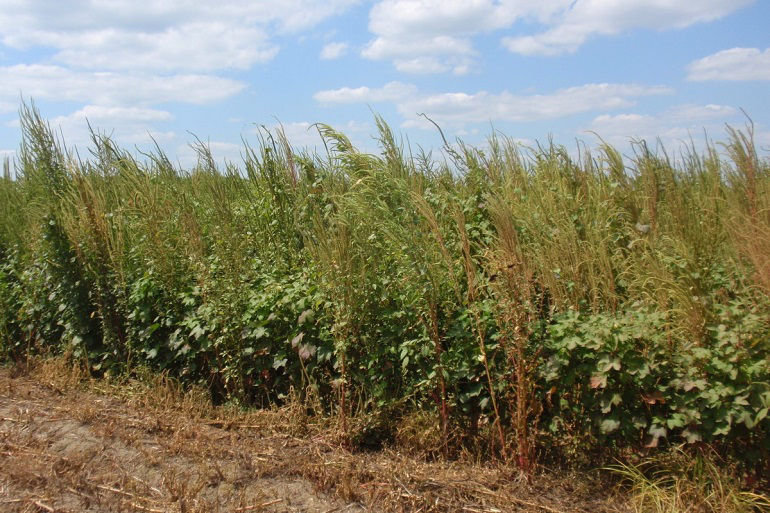ALS Resistance Affects Herbicide Decisions in Cotton Crops
May 17, 2018

With all the talk about glyphosate resistant weeds, it’s important that cotton farmers keep in mind the lessons learned more than two decades ago when key problem weeds in wheat, including kochia and Russian thistle, developed widespread resistance to ALS herbicides.
Today, cotton crops – in addition to wheat, corn and soybeans – also fight ALS-resistant broadleaf weeds and grasses such as marestail, waterhemp, Palmer amaranth, cocklebur, sunflower, shattercane, giant foxtail, cheatgrass and others.
ALS products (Group 2) remain valuable weed management tools for farmers because they still control a broad spectrum of weeds and grasses. However, overuse of ALS herbicides will allow selection for ALS-resistant biotypes to populate crops.
Those decades-ago lessons resulted in growers continuing to balance the use of effective herbicide chemistries with different sites of action, combined with additional best management practices, to create an integrated approach to crop protection.
To protect the effectiveness of ALS herbicides, here’s a quick checklist:
- Know how the chemistry fits with the key problem weeds in your fields.
- Integrate ALS herbicides with herbicides from other chemistry groups with different modes and sites of action.
- Take advantage of cultural practices such as crop rotation, tillage and cover crops to help manage weeds.
- Never let weeds go to seed and enter the soil seedbank, where they can cause problems for years to come.
Fewer weed management options are available for cotton than corn or soybeans, which means best management practices are even more critical to use with cotton herbicides to preserve their effectiveness long term. Experts recommend tankmixing multiple effective sites of action every time herbicides are used. ALS still provides effective control on a wide assortment of weeds and is easily tankmixed with other products.
Bottom line, although cultural practices help, experts agree that the only acceptable goal for managing weed resistance to ALS and other herbicides is to have zero tolerance for the distribution of seeds by resistant weeds. The old way of thinking of weed control as an economic threshold is obsolete.
Bayer Solutions
Bayer offers a broad portfolio of herbicides to manage tough-to-control and resistant weeds. A well-thought-out weed management program, using multiple sites of action and nonchemical practices, should be implemented.**
View Bayer’s product portfolio to learn more about weed control from Bayer or contact your local Bayer representative.
** Not every product is suitable for every situation, nor registered in every state, and proper application techniques will enhance results. Before applying any herbicide, please read the entire label for the best possible results and to confirm that the product is effective on the weeds you wish to control.
Bayer and the Bayer Cross are registered trademarks of Bayer.